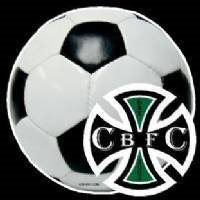 Continuing with last week's blog topic of, "What it take to be a Successful US Youth Soccer ODP player", we have already mentioned two important technical qualities the player should possess. They were (1) quality of the first touch and (2) the ability to strike a ball cleanly. The next two technical areas to be addressed are:
Continuing with last week's blog topic of, "What it take to be a Successful US Youth Soccer ODP player", we have already mentioned two important technical qualities the player should possess. They were (1) quality of the first touch and (2) the ability to strike a ball cleanly. The next two technical areas to be addressed are:(3) The ability to dribble to penetrate and to maintain possession---the player should be comfortable dribbling with all four surfaces of the foot, the sole, inside of the foot, instep, and the outside of the foot. The player has to be comfortable in their ability to move at speed with the ball and to avoid challenges from opponents while still maintaining control/possession of the ball. Players at this level have some tactical understanding of when to hold the ball up/shield and wait for supporting players to combine with. They also have some tactical understanding of when to take a player(s) on in an attempt to beat the opposition. A player can understand tactically when and where during a match to execute this skill, but without the technical abilities of knowing how to make these tactical decisions actually work creates many frustrating moments on the soccer field for the player. As the competitive level of matches increases for players, they need to understand that turnovers because of a poor or a needless dribbling run puts their team at a defensive disadvantage from which many goals are scored.
(4) The ability to head the ball in attack and defense---Can the player effectively clear an incoming high ball with their head when defending, can the player effectively pass and shoot with their head when on attack. There are many things that can go wrong to affect the quality of a good header (1) mistimed jump, (2) poor assessment of the flight of the incoming ball, (3) closing of the eyes, and (4) mistimed thrusting of the head towards the ball. All of these situations will affect how the player strikes the ball with their head and how successful the header will become. Heading is a skill that often receives less than its normal share of appropriate training time during practice sessions. But think about the number of goals that are scored off of restart situations from headers or the number of assists that come from passes from headers, especially from flick headers. By possessing the skill to handle any type of heading situation while playing on both sides of the ball (attack or defense) allows players to increase their chances of moving up the elite player development ladder.
Next week I will finish up with the technical abilities necessary to be a successful US Youth Soccer ODP player before moving on to the tactical qualities needed by players to be successful in the US Youth Soccer Olympic Development Program.

No comments:
Post a Comment